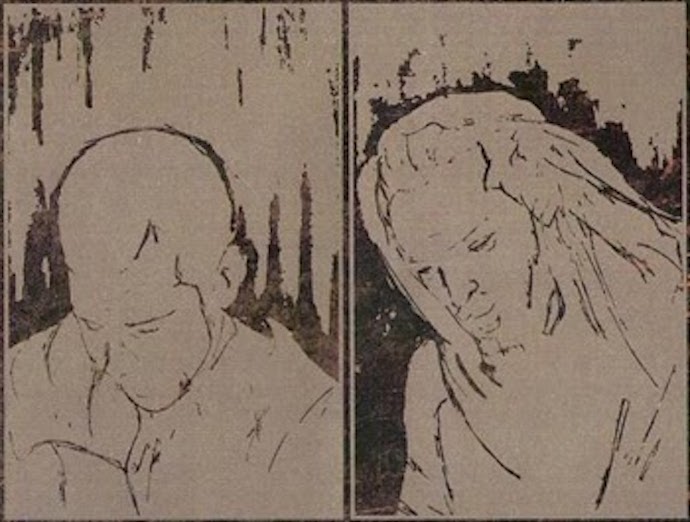
L-R Neptune, Icare
(We welcome to our pages Jon Rosenthal, who brings us a very special and extensive interview with the duo behind the Québec band Gris on the 10th anniversary of Gris‘ latest album À L’âme Enflammée, L’Äme Constellée….)
Gris‘ music has been with me for a long time. Seventeen years ago, I first heard their debut (under the Gris banner, having been previously named Niflheim) Il était une forêt…, and nothing had quite struck my sad teenage self like the work of these two Quebecois musicians. Morose, complex songwriting, mammoth ambience, and absolutely throat-rending vocals all find a home in this album. It’s glorious, even now, and unraveling the mystery behind these two low-profile artists, multi-instrumentalists Neptune and Icare, has been both delightful and inspiring.
Initially lumped in with “depressive/suicidal black metal” (heretofore referred to as DSBM), Gris‘ music dealt more with the balance of joy and despair, to the point where a logo of theirs even featured plus and minus symbols to really drive the point home, rather than wallowing in the latter. You’d never guess it, though, especially due to Icare‘s vocals, especially on Il était une forêt… (I later found out that, yes, he did, in fact, harmonize his screams in a melodic sense, too, but I digress). Unlike DSBM, though, Gris‘ music is compelling, featuring dense harmonies, practiced and thoughtful chord progressions, and a very deliberate songwriting approach that, while other DSBM bands revel in minimalism, maximizes on the space it occupies, revealing an inner depth to their music that many might not catch upon first listen. To think this was the work of two Canadian teenagers still baffles me, honestly.

Miserere Luminis
As they progressed, the legendary “third” (if you count the Niflheim album as the beginning of a trilogy, which Gris does) album was discussed in secret, whispered across forums and in comments on various social media pages. 2009 gave the world the first Miserere Luminis album, a collaboration with fellow Quebecker Annatar from atmospheric black metal solo endeavor Sombres Forêts. Intended to be performed as a concert, it was in poor quality uploads of Miserere Luminis playing to packed living rooms that we saw the first glimpses of these two outside tray card photographs. Donning dramatic, golden theater masks, the full Miserere Luminis band performed their self-titled album in various tours and one-off shows before disappearing altogether. Miserere Luminis would re-emerge in the early 2020s, armed with a new album – Ordalie – which was met with critical acclaim.
In 2013, À L’âme Enflammée, L’Äme Constellée… reared its head. Gris were back. A massive double-album, À L’âme Enflammée, L’Äme Constellée… was suddenly so much more sophisticated, the band using extended instrumentation like violin, cello, and piano to further flesh out a technically proficient and beyond musically competent album. Neptune‘s guitar work is especially prominent here, moving far beyond the heavily buzzing performance which preceded this album and into a more ethereal, musically pronounced realm.
As Icare and Neptune rounded out a decade past their most recent release in 2023 (it took a while to finish this), they were kind enough to break their lengthy silence surrounding the project and offered an in-depth interview concerning the band, its origins, and much more.
This is the last interview I will publish as a music journalist. The experience has overall been a pleasure, but I am off to do other stuff! Thank you.
À l’âme enflammée, l’äme constellée… followed a lengthy period of silence from Gris after the celebrated Il était une forêt…. What went into this period of time? That is to say, did you find yourselves composing and recording during the entirety of this six year period?
Neptune: Well, yes and no. We have been writing and composing music for most of that six-year period, but a few years of it, from 2008 to 2010 approximately, were dedicated to creating and playing the first Miserere Luminis album. If my memory is correct, we spent two, two and a half years crafting À L’âme Enflammée, L’Äme Constellée…, which is quite longer than what our previous albums had taken, but we also had higher goals and wanted to paint a broader picture for this particular one, so the time it took feels legitimate in hindsight.
Was it your intent to craft such a lengthy album, or was the album’s 80+ minute runtime an end result of your conceptual and musical performances?
Icare: We didn’t actually plan a double album at the beginning. We did have longer texts to fit into musical pieces and we did what we thought would serve the whole best. As with many things we did and still do, we tend to let things unfold without forcing anything. As if they had a mind of their own and we were simply the vessels or medium for their manifestation. It was essentially by acknowledging the quantity of material that we had at some point that we chose to divide the work into two sides. The interludes were then added naturally and the concept of both albums reflecting themselves in this way imposed itself and grew on us while we were still arranging the music.
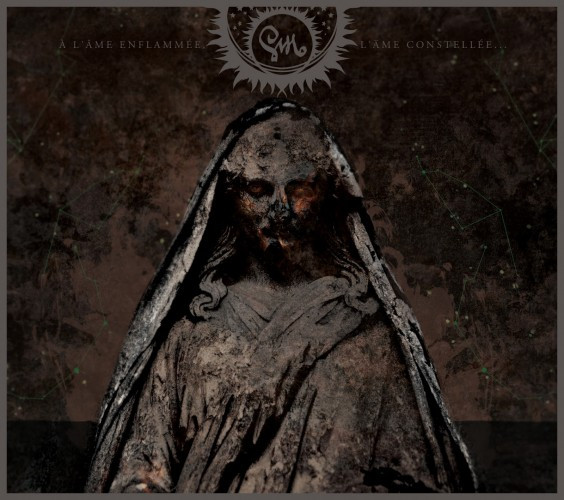
Though Il était une forêt… belied a greater sense of musical mastery and songwriting intrigue, À l’âme enflammée, l’äme constellée… featured much more advanced compositions and performances in comparison. Though time, practice, and what I assume to be education went into the period between these two albums, what fueled this densening in sound?
N.: I think time, as you mention, played a significant part in enhancing the sound we were after. We took a lot more time to write, compose and produce the album as I’ve said previously, but we also had had the time to discover more diverse music (Gustavo Santaolalla to name one among others, which in my opinion is one of the major influences on À L’âme Enflammée, L’Äme Constellée…). Where as with Neurasthénie and Il Était Une Forêt…, we were more strictly and willingly adhering to the sound of DSBM (I remember spending those years almost exclusively listening to this specific genre), when came the time to dive into À L’âme Enflammée, L’Äme Constellée… I feel we had gained enough maturity to assume the fact that we wanted to step outside of the traditional codes of black metal, adding more richness, colors and depth with various elements (strings, chants, percussions, atmospheres, etc.), while still retaining its intensity.
Furthermore, the both of us are detail-oriented persons, and perfectionists in our own fields, so it kind of makes sense to me that the more we developed our musical project, the more complex and nuanced it became (evolution also being a conceptual pillar of Gris). Regarding education, it certainly played a small role in it too, but for Gris (and subsequently Miserere Luminis) intuition and feeling really are the main driving force.
Interviews following Il était une forêt… stated that future works would follow in the more orchestrated and Romantic sound found in the album’s closing track “La Dryade.” Did you have this sound in mind while composing Il était une forêt…?
I.: Not specifically. We definitely already had a profound appreciation of strings arrangements in film scores or other contemplative music. We also knew we wanted to part from using synthesizers at some point and we were ultimately building our sound towards a more organic type of atmospheric ornaments, but these were all just ideas.
Regarding “La Dryade,” the fact is I got a violin towards the end of the recording process and using the modest experience I have had with the instrument as a child, we composed a more cinematic type of song filled with hope, passion and courage as the album’s last piece, which was a preview of the emotional elements that constituted what was to come. While being filled with desperation and teen angst, we feel there already was a light burning at the core of what we were composing at the time.
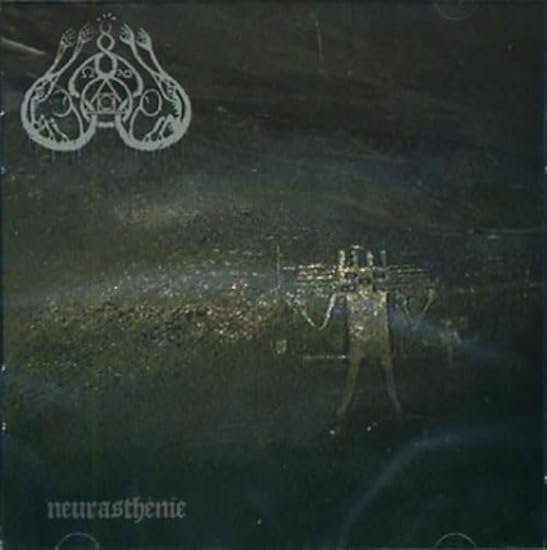
À l’âme enflammée, l’äme constellée… closes a greater trilogy which was opened with the Niflheim (later renamed Gris) album Neurasthénie. Did you have a trilogy in mind when you recorded this first album under a different name?
N.: Not so much. For Gris, we’ve had for a long time this idea of a total of seven albums, each one of which being a step in some sort of evolution process, our own creative process I guess, thus completing what we want to express through this artistic vessel. Whether or not we will go through with this idea still remains a mystery to the both of us. A part of me believes we will, but the course of life can be quite unpredictable and complex, so who can really tell?
But to answer your question more specifically, I think À L’âme Enflammée, L’Äme Constellée… definitely closes a chapter, although it was neither intended nor planned, mainly because of time, once again, since it’s been ten years since then. Regardless of whether we like it or not, the time gap in itself marks the end of an era. If we were to write a new Gris album today it would almost certainly feel different, opening some other space, reflecting some new parts of ourselves while still emerging from the same roots.
The driving concept of balance between depression and joy came to an apex on À l’âme enflammée, l’äme constellée…, going so far as to feature a constellational track order to maintain a greater sense of equality. Considering Gris’ perceived alignment with the “depressive black metal” sound, how did you find yourselves achieving the balance between these two emotive halves on this album?
N.: The fact that the album ended up being split into two “equal” parts came about fairly naturally, although it happened very late in the creation process, almost at the end. At first, it mostly stemmed from a practical problem; the length of the music we had for the album couldn’t fit on a single CD and we didn’t really want to cut out parts of it because of that, so the idea of cutting it into two halves sort of imposed itself. It is somewhat of a happy accident that parts of the concept we already had for the album readily lent themselves to the “being split into two parts” format. Once we committed to the idea, everything else fell into place pretty smoothly. It didn’t feel forced for us and we didn’t need to change that many things or rework the album so much to make it work that way.
Do you feel À l’âme enflammée, l’äme constellée… fits in the “depressive black metal” sphere? What would you consider it to be?
I.: We have never been very fond of stylistic labels. It’s obvious that the music has its roots in black metal music and draws a lot of its inspiration from sadness and resentment. It is just as obvious that it flourishes by drawing on several other styles and that it goes beyond the monotonous repetitive and minimalist framework of the more classic DSBM, especially with this album which presents very distinctive structures and changes. Beyond the initial negativity, in my opinion we also hear a lot of power and passion. It is overall an ode to life. It is before everything else music that comes from our will and rage to live, embracing every aspect of what it means to be human.
In short, as ordinary as this response can be, I would say yes and no. We have read somewhere someone calling our music emotional/cathartic black metal. I think it fits pretty well.
This album also featured a new logo which didn’t quite as obviously tackle this idea of balance between depression and joy, as the old one was very visible in its display of positivity and negativity. What led to this change in logo, and how do you feel it represents Gris as a whole?
I.: The aesthetic change of the logo does not have a precise or ideological foundation. I often doodled abstract symbols at that time, including the symbols found throughout the album’s booklet. The logo depicted on this album is just that, a drawing made on the corner of a sheet which inspired us and seemed to fit in with the “calligraphy” of the moment. A mixture of the mystical, the abstract and abandonment to intuition.
I also believe that the notion of balance represented by the original logo, although strong, was shown in a somewhat naive and adolescent way. It represented the notions as absolutes on a dualistic spectrum which does not embrace the whole beautiful and poetic mess of what things are and how they are lived and felt. So, maybe unconsciously I wanted to do it again. Like a snake shedding, the thing just happened and we embraced it as if it was obvious.
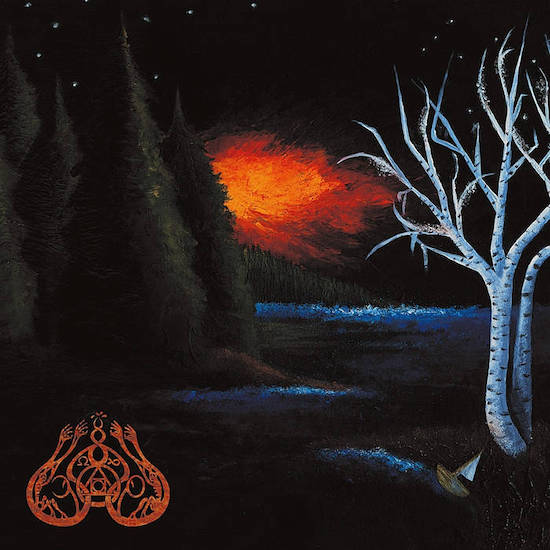
Icare’s vocal presence on À l’âme enflammée, l’äme constellée… is in stark contrast to Il était une forêt…‘s desperate howling and shrieking, though the emotive content remains similar. While the idea of continuing to perform with such (to use this word positively) ridiculous vocals is likely physically taxing, what did you want to achieve with this style change?
I.: There are two main reasons for the change in timbre. One deliberate and the other, of natural causes. I definitely wanted the vocals to convey a sense of power and rage rather than despair and lament. It also seemed to me that the result would be better with more nuances. The few high-pitched howls that punctuate the album are sharper than when there’s only that from one end to the other. The other reason is simply due to the fact that between the ages of 17 and 23, my throat and diaphragm grew. It became more difficult for me to hit the same notes and so I wouldn’t have been able to do the same voices again anyway. Today, I consider the result richer and more interesting.
You two were quite young when Gris first “officially” started – I believe Neptune told me you were in your mid teens when Il était une forêt… was recorded and released. As you approached your early-to-mid twenties upon À l’âme enflammée, l’äme constellée…‘s release, how did you feel about the emotive content of your earlier material? Do you still connect with this latest album now that a decade has passed since then?
N.: Yes exactly, we were around 17 years old when Il Était Une Forêt… was released. To be honest, I find it quite difficult to listen back to this album (and Neurasthénie as well), with the exception of a few moments in it, because I mainly only hear the juvenile aspects of it. I can still try to appreciate it for what it is (because, strangely enough for me, it seems to have had a big impact on many people) and for what it meant for us and what we were trying to achieve at the time.
Happily for me (and I think I speak for the both of us), I really don’t feel the same way about À L’âme Enflammée, L’Äme Constellée…. Although I can certainly hear its flaws and imperfections, and the limitations we had at the time, I profoundly still connect with the intent, the emotional endeavor and the message of that album. Even though I rarely listen to it, when I do, I really enjoy it and feel somewhat proud, because I think we well-achieved the goals we had set out for ourselves and I feel it still carries a meaning that is important to me to this day. To me personally, it’s the only album we did that stood the test of time.
You both handled the entirety of the musical content of this album (aside from a soprano voice performance by singer Alexia Tapp), from composition to mixing and mastering. Though this wasn’t changed from your previous album, what was it like handling a much denser and longer album this time around? Was ceding control of this album’s musical elements ever an option?
I.: The process was certainly slower and more laborious than Il Était Une Forêt…. We were particularly attentive to details and perfectionists in relation to our vision. We must face the facts that slowness is part of our modus operandi, due to the vagaries of life but also to our meticulousness. The question of delegating things to someone else simply wasn’t an option for us at the time. Gris was a very personal vehicle of expression for us and since we were able to accomplish things well enough on our own, between our respective set of skills, that’s how we did things. However, depending on the sounds we want to include in our music, it cannot be ruled out that we could someday call on more specialized artists to combine their talents with ours for future albums.
You both maintain a very low profile in the metal community, going so far as to carefully guard your identities beyond your stage names even as a live unit in Miserere Luminis, the band you share with Sombres Forêts mastermind Annatar. What is it about this anonymity that appeals to you, and why do you continue to maintain this after such a long time?
N.: Even if it may seem to be coming across as such, I personally don’t think we actively seek to conceal our personal identity, nor are we overprotective of it. Quite frankly, I don’t really care about anonymity per se. For instance, many other musicians in Québec’s black metal scene know who we are personally and we’ve never tried to stay hidden or unknown as far as I can remember. Of course we have always used pseudonyms (which, strangely enough, quite well reflect some of our own psychological traits), which is fairly common in the black metal genre, as we like the idea of separating the personal from the artistic (the use of masks in our live performances serves a similar purpose in my opinion, and also provides a more theatrical aspect). Even though our lives have fuelled what we put in our music, we’ve always preferred to guide the listener to focus on the emotional and conceptual realm that we try to create.
Also, our music doesn’t really evoke day-to-day life or events, but rather exposes the search for a greater ideal, so it feels pretty relevant not to use our day-to-day names. Besides that, on a more personal level, I am a fairly introverted and private person, so I make sparse use of things like social media and social display in general for example, so this may also have contributed a little in creating a “mysterious aura” around who we are.
It’s been a long time since this latest Gris album was released, just over ten years at this point. How do you two feel about this album as a finished product? I understand you spent a lot of time on this particular album when compared to its predecessor, but is there anything you would change?
I.: Oh, how time flies…! As Neptune mentioned, this is the album we remain most proud of today. I personally wouldn’t change anything. A re-mixing / re-mastering could perhaps be relevant at some point I guess, but I wouldn’t change the content at all. When I listen to this album again, I am moved and grateful to have had the opportunity to devote myself to this work as we were able to do at the time. The music, the arrangements and the texts of Neptune always move me and the deep message has cemented itself to become something that still animate our lives today and that we can still hear, I believe, in the most recent album of Miserere Luminis.
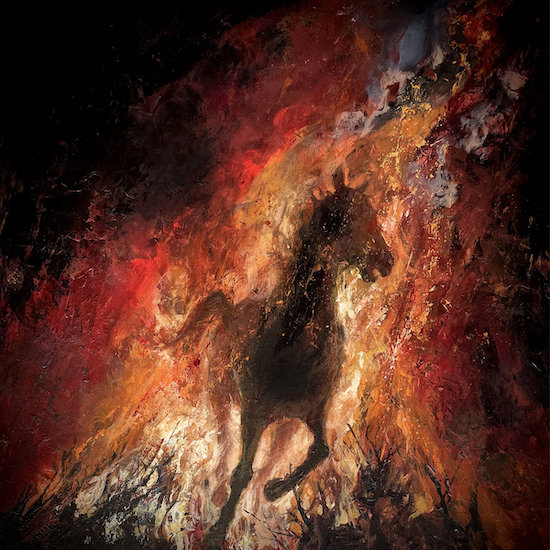
You both recently released a new Miserere Luminis album, Ordalie. Aside from the obvious outside collaborative element, what does this project achieve that separates it creatively from your work as Gris?
N.: When we started Miserere Luminis back in 2009, it was mainly for two reasons; to have a common (with Annatar of Sombres Forêts, since we were around each other all the time) musical project in which we could experiment with ideas we wouldn’t incorporate in our other bands and that would enable us to focus on live performances. It was in this state of mind that we composed and recorded the first Miserere Luminis album, which at the time, we thought of as a one time thing. But in the last few years, we’ve gradually felt more and more that we wanted to transform Miserere Luminis into a “full-fledged” band. So from that point on, I personally stopped thinking about what ideas should belong in which project and started to focus on what music I want to do right now, while keeping in mind that we still want to play this music live. In that regard, I feel Ordalie is somewhat closer to something we could have done with Gris.
How do you feel about Gris after 20 years of existence (counting the Niflheim demo days)?
I.: I think I speak for the both of us when I say that Gris and the music we’ve done since through other projects or professional efforts have always felt like a central part of our world and minds. It’s how we appreciate and create the life we live. I feel like at the time of Neurasthénie, and especially of our earlier demos, we were just teenagers trying to emulate the thing that brought fire into us. With all the authenticity and naivete we had. For Il Était Une Forêt…, when we were still so young, it was just kind of what we were doing. We wanted to reach new levels of expression. It was our identity and our way of expressing how we felt about being and our way of dealing with it. At the time, À l’âme Enflammée, l’Äme Constellée… felt for me like our Magnum Opus. I really gave everything I had to give in this album. I remember the process fondly.
I sometimes regret the fact that we did not feed this vessel of ours more along the years and left things on hold for so long. But as with all things, the choices we make are often complicated and nuanced. And we are still here. So let it be what it will be. We still actively make music with other projects, whether it be live performances with side projects or with the recent Miserere Luminis comeback. To sum it up about my feelings about Gris and to speak for myself, I feel alive. Sometimes I feel proud, sometimes uncomfortable. I feel an abominable and marvelous maelstrom of everything. And that’s OK.
Is there more Gris material in the works? What would (or does) Gris sound like in 2024?
N.: Although we are focusing on Miserere Luminis right now, we do have a good basic framework for a potential next Gris album. And while we want to continue writing and composing with Miserere Luminis, I think there is a good chance that we might start working on this new album when we are done producing Miserere Luminis‘ upcoming record. As for what it will sound like, at the moment it is very hard to tell, as most of what we do is based on instinct. I think we both want to explore new and different soundscapes and still pursue alternative ways of how black metal can sound, while still keeping the core elements we established on À L’âme Enflammée, L’Äme Constellée…. All in all, when it comes to be, I hope it is still passionate and intense.
Is there anything lingering that you would like to say about Gris?
I.: We never thought our music could reach people as much as it did. We have met people who have dealt with horrors and really challenging experiences in life and that told us how much our music helped them through it all. It is as touching as it is humbling. I would like to say to anybody who felt our music in their heart and soul: thank you for receiving and enjoying what we put out in this world. I hope we will continue to do so in the future, no matter how long it may take. Thank you Jon also for this interview. It made us reflect on a time that seems so long ago. Cheers!
Gris‘ music can be found and purchased via Sepulchral Productions and Northern Silence Productions.

The arc connecting À L’âme… to Ordalie has always been quit apparent IMO, particular in light to how dissimilar it sounds to the first Misere Luminis an album, to my ears at least. The co-mingling of the two projects suggested by Neptune confirms this and makes sense in light of the orchestration found on Ordalie. Whatever vehicle releases the next music from these individuals, these guys are producing some of the most professional sounding music in the history of heavy metal adjacent genres, and I personally can’t wait to hear where they go next. Top shelf.